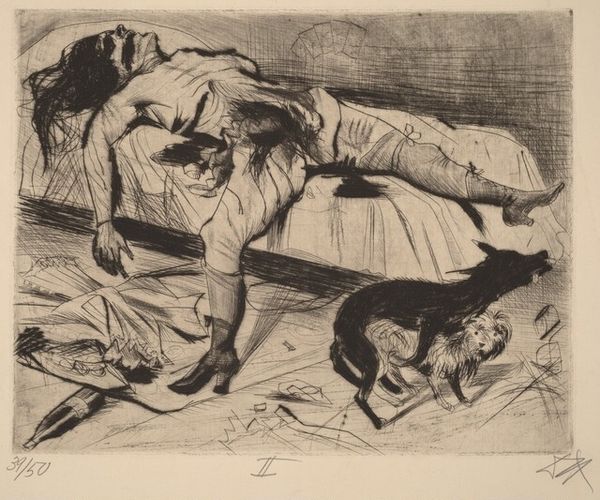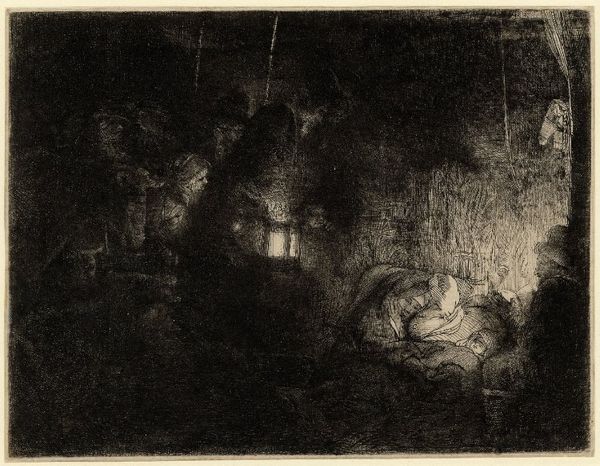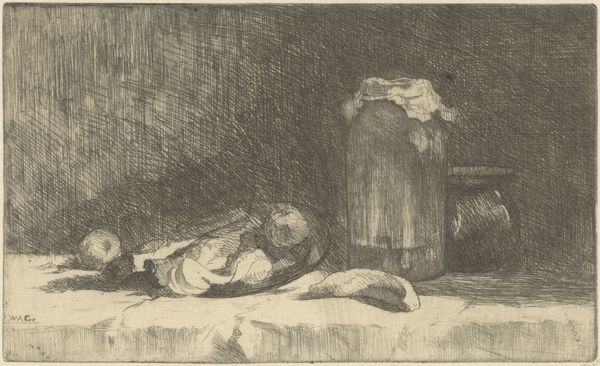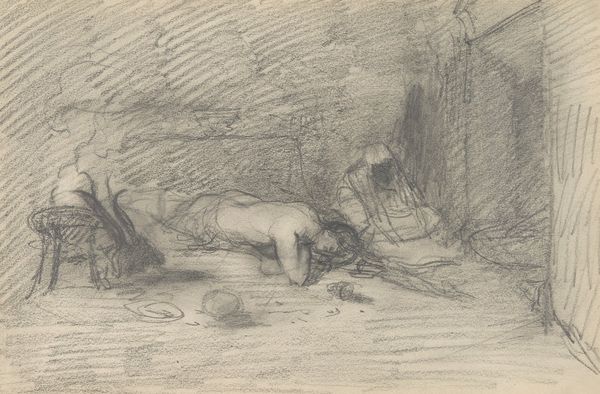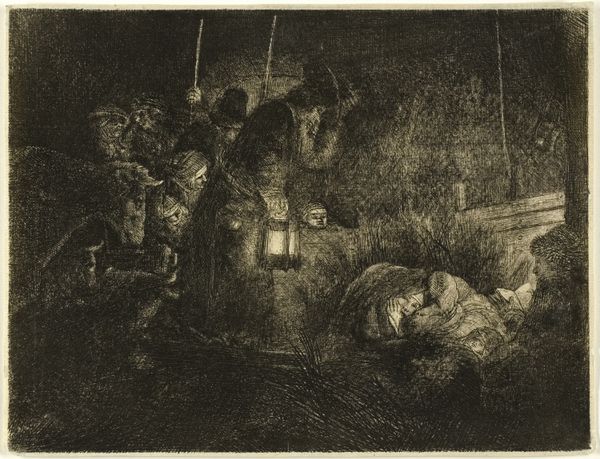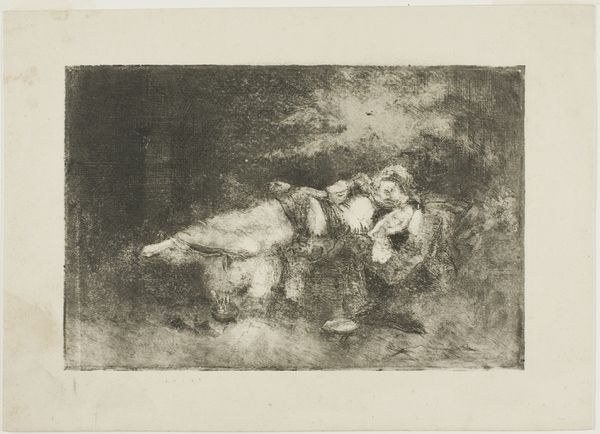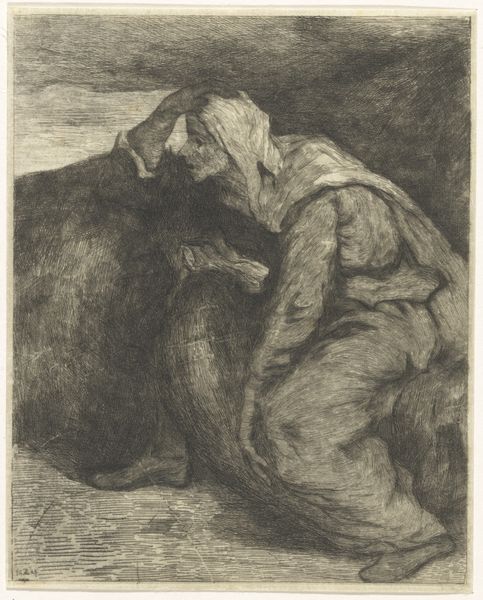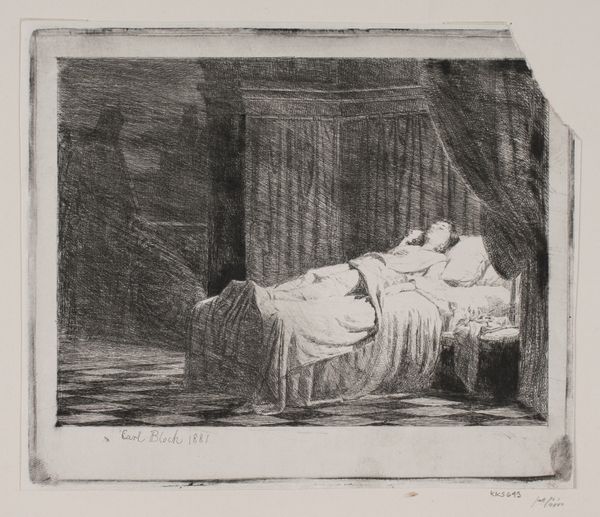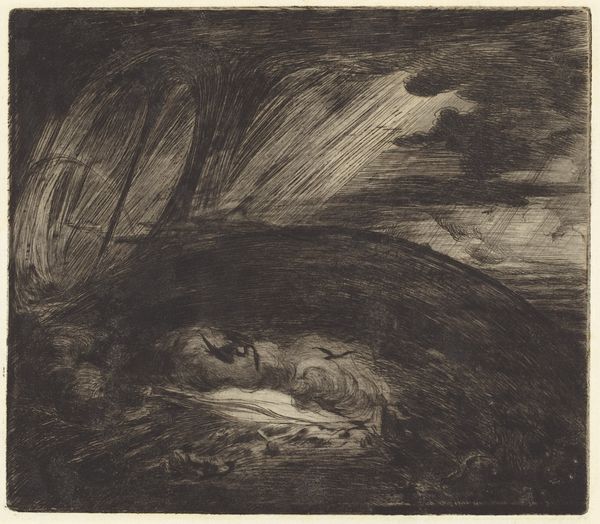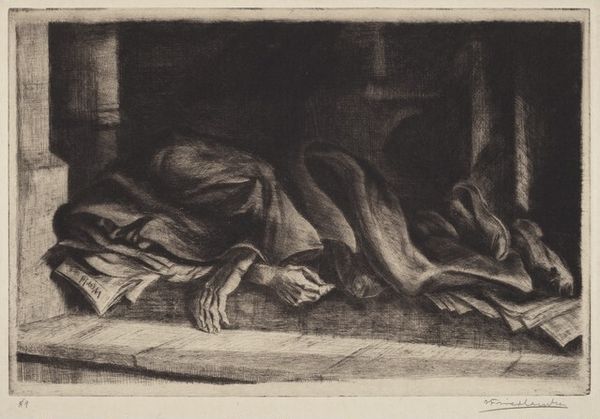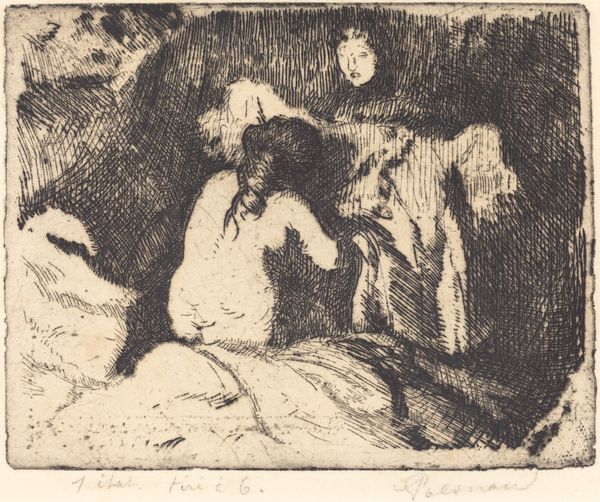
drawing, graphite, charcoal
#
portrait
#
pencil drawn
#
drawing
#
narrative-art
#
charcoal drawing
#
figuration
#
pencil drawing
#
ashcan-school
#
graphite
#
portrait drawing
#
charcoal
#
charcoal
#
graphite
Copyright: Public Domain: Artvee
Curator: We are looking at a drawing entitled "The Struggle," credited to George Wesley Bellows, a significant figure in the Ashcan School movement. The piece appears to utilize charcoal and graphite. Editor: Woah, immediate feeling? Night terrors. Like peering into someone’s deepest, darkest, most anxious dream. It’s intense, dark...claustrophobic almost. Curator: That resonates strongly with Bellows's commitment to depicting raw, unfiltered experiences, especially concerning marginalized communities. The darkness you mentioned could symbolize societal oppressions, anxieties linked to economic hardship, or even systemic violence faced during the historical period. Editor: Right? And the skewed perspective… it’s unnerving! Like you’re trapped inside the struggle with them. Is that a lantern on the bedside table? Kinda throws a noir spotlight on everything. Curator: The figuration is indeed compelling, forcing viewers to confront the subject’s disquietude, which very often echoed larger socioeconomic battles. Bellows consistently addressed class, labor, and inequality through his work. And you are right to notice the lighting—it really heightens the dramatic tension, suggesting something lurking just beyond our understanding, beyond the pool of light. Editor: It’s masterful how the greyscale almost blurs the lines of who’s who, of what's actually happening. The struggle isn't just physical, it’s mental. Like fighting an invisible enemy—maybe poverty, injustice...despair even? And the toppled chair on the floor – chaos reigns! Curator: I see it very similarly. By not clarifying who these figures are—are they fighting, embracing, attacking?—Bellows encourages an exploration of broader themes. What does it mean to wrestle with forces bigger than yourself, unseen yet pervasive? It becomes less about one particular event and more about existential conflicts experienced by many. Editor: Makes you wonder what was happening in Bellows’ life, or the lives of those around him, that drove him to put something this…raw on paper. You feel the fight. And in a weird way, you kind of respect the honesty? It's not pretty, but it is truthful. Curator: Exactly. His truth speaks powerfully even now, reflecting ongoing struggles for justice and offering critical insight into historical power imbalances and perhaps even a call to social action through shared experience. Editor: Thanks for pulling me into that; it's heavy but it has definitely sparked something inside me, a need for answers about myself and the world we all struggle with every day.
Comments
No comments
Be the first to comment and join the conversation on the ultimate creative platform.

